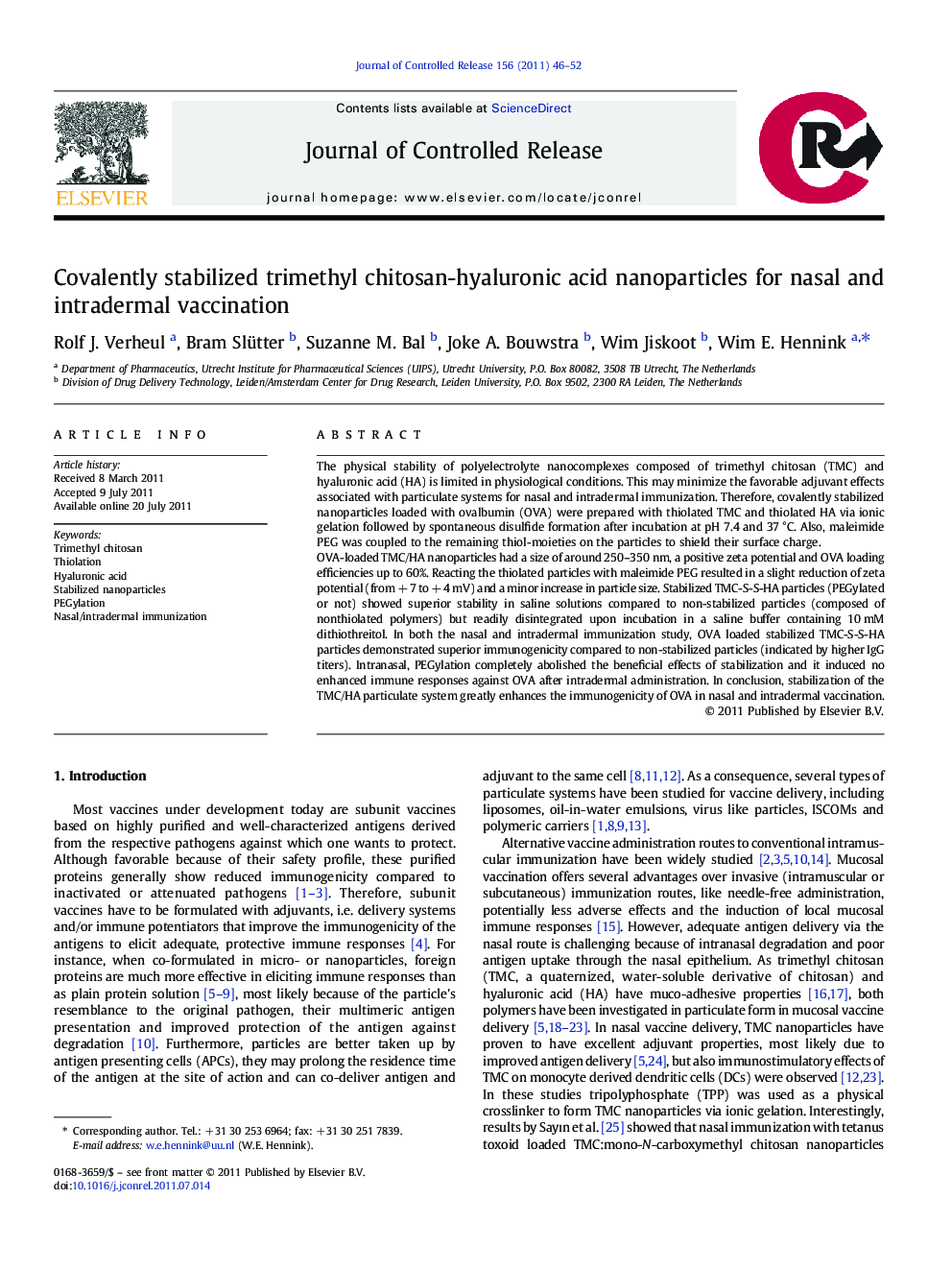| Article ID | Journal | Published Year | Pages | File Type |
|---|---|---|---|---|
| 1424900 | Journal of Controlled Release | 2011 | 7 Pages |
The physical stability of polyelectrolyte nanocomplexes composed of trimethyl chitosan (TMC) and hyaluronic acid (HA) is limited in physiological conditions. This may minimize the favorable adjuvant effects associated with particulate systems for nasal and intradermal immunization. Therefore, covalently stabilized nanoparticles loaded with ovalbumin (OVA) were prepared with thiolated TMC and thiolated HA via ionic gelation followed by spontaneous disulfide formation after incubation at pH 7.4 and 37 °C. Also, maleimide PEG was coupled to the remaining thiol-moieties on the particles to shield their surface charge.OVA-loaded TMC/HA nanoparticles had a size of around 250–350 nm, a positive zeta potential and OVA loading efficiencies up to 60%. Reacting the thiolated particles with maleimide PEG resulted in a slight reduction of zeta potential (from + 7 to + 4 mV) and a minor increase in particle size. Stabilized TMC-S-S-HA particles (PEGylated or not) showed superior stability in saline solutions compared to non-stabilized particles (composed of nonthiolated polymers) but readily disintegrated upon incubation in a saline buffer containing 10 mM dithiothreitol. In both the nasal and intradermal immunization study, OVA loaded stabilized TMC-S-S-HA particles demonstrated superior immunogenicity compared to non-stabilized particles (indicated by higher IgG titers). Intranasal, PEGylation completely abolished the beneficial effects of stabilization and it induced no enhanced immune responses against OVA after intradermal administration. In conclusion, stabilization of the TMC/HA particulate system greatly enhances the immunogenicity of OVA in nasal and intradermal vaccination.
Graphical abstractFigure optionsDownload full-size imageDownload as PowerPoint slide
